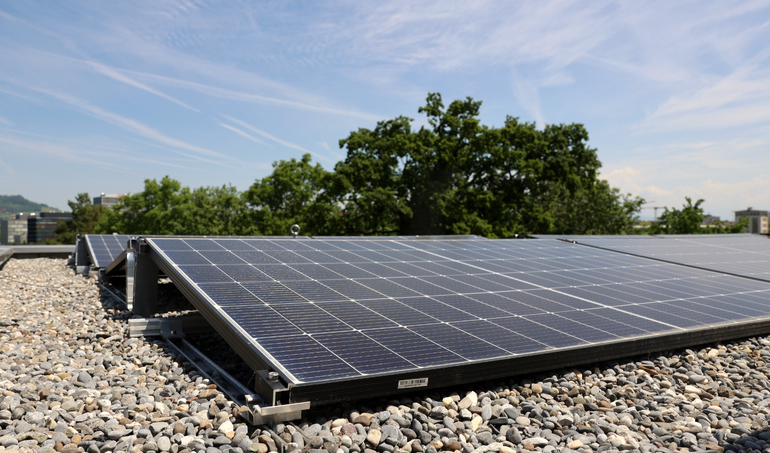It’s another gloriously sunny day. Rolf Plattner, the Head of Infrastructure at the Swiss Federal Institute of Intellectual Property (IPI), is standing next to one of the two solar power systems on the roofs of the IPI. The summer weather is ideal for solar cells. “We produce almost 68,000 KWh of power with the entire installation. That covers the IPI’s power consumption for around one and a half months,” says Rolf Plattner. For comparison: a 60°C wash in a modern washing machine uses around 1 KWh.
For IP professionals
This is the portal for professionals working in the field of intellectual property. Here you'll find direct access to all necessary resources.
Quick links
News
20.02.2025 | Law and policy, Copyright
AI regulation in Switzerland: Federal Council chooses a sectoral approach
...more
New solar panels: the IPI favours renewable energy
Solar panels on the roofs of the IPI are topping up the institute’s power supply. They’ve been firing on all cylinders recently, thanks to the fine weather.

173 solar panels in use
Getting the solar installation operational took around two and a half years, including planning, procurement and approval. The panel installation process in itself lasted seven months. “Due to the war in Europe, there have been lots of delays in deliveries for individual technical components,” explains Rolf Plattner. There are currently 173 panels in operation, each of which has a lifespan of ten years. If, in the medium term, the southern flat roof has to be renovated, solar panels will be installed there too.
The IPI installed the solar power system with the aim of using renewable energy. For the same reason, the institute also decided to voluntarily sign the RUMBA Agreement (Swiss confederation resource and environment management agreement, in German, French and Italian). One of RUMBA’s recommendations is to set up solar panels on the federal administration’s buildings. “Another reason for installing panels is the sharp rise in electricity costs,” says Rolf Plattner.
Keeping an eye on the panels with an app
The flat roofs were prepared for the installation in line with official guidelines (e.g. fire protection and safety barriers). It’s crucial to install the solar panels correctly in relation to the existing lightning protection. “Other challenges were the delivery delays I mentioned before and a shortage of specialist workers. That led to delays in the construction process.” Rolf Plattner keeps an eye on the system’s operations with an app. It’s also important to clean the surfaces regularly. Dirty panels can affect the installation’s performance.
Do you have an idea or an invention? Are you wondering if you can patent it? Find out with an Assisted Patent Search.




![[Translate to English:] [Translate to English:]](/fileadmin/_processed_/b/c/csm_good_soaps_regine_Schneider3_snagit_35b2d97343.png)